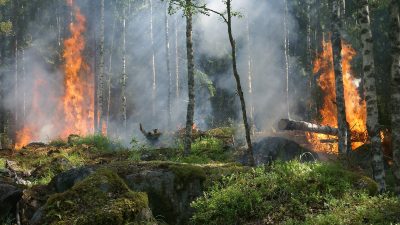Uncovering The Hidden Devastation And The Lessons We Still Ignore
The 1913 Eshan Earthquake, which struck the Yunnan province in China, was a catastrophic event that devastated the region and left an indelible mark on its history. While the earthquake’s impact on the local communities is well documented, it is often overshadowed by larger global disasters of the time. The tremors, felt across vast areas, caused buildings to collapse, villages to be swallowed by the earth, and communities to be shattered.
This earthquake fundamentally changed the way the world looked at seismic risks in areas that had previously been considered less vulnerable. The lack of effective building practices, coupled with the absence of modern earthquake detection technologies, made the impact even more severe. The Eshan Earthquake highlighted the urgent need for more robust disaster preparedness systems.
The Untold Truth Behind the 1913 Eshan Earthquake Disaster
The 1913 Eshan Earthquake may not be as widely known as other major earthquakes, but its consequences were no less severe. Official reports often downplay the true scale of destruction, leaving many of the human and economic costs hidden. While official estimates put the death toll at around 10,000, many scholars believe the number could have been much higher due to the extent of the region affected.
Beyond the immediate loss of life, the disaster also caused long-term economic damage. Entire agricultural systems were destroyed, leading to widespread famine and economic collapse. The local infrastructure, already fragile, was shattered beyond repair, leaving survivors struggling for decades.
Shattering Lives: The Hidden Consequences of the 1913 Eshan Earthquake
- Long-Term Trauma: The survivors of the 1913 Eshan Earthquake faced psychological scars that lingered for generations. Many families lost their homes, their livelihoods, and their loved ones in one catastrophic moment. The trauma led to deep societal fractures, with families finding it difficult to rebuild their lives after the disaster.
- Economic Struggles: The earthquake destroyed vast swathes of farmland, disrupting the local economy for years. This agricultural collapse resulted in severe food shortages, compounding the suffering of the survivors. In the years following the disaster, the region struggled to recover economically due to the destruction of critical infrastructure and resources.
The Aftermath of the 1913 Eshan Earthquake: Was Our Response Enough?
The response to the 1913 Eshan Earthquake was inadequate by modern standards. At the time, the Chinese government was still in a state of flux, and regional authorities were ill-equipped to deal with the scale of the disaster. Relief efforts were slow and fragmented, with aid taking weeks to reach the hardest-hit areas.
International support was also limited, given the global tensions of the time. The lack of a coordinated and efficient response meant that many survivors were left to fend for themselves, leading to a slow recovery process. The government did eventually begin rebuilding efforts, but much of the region’s infrastructure remained in ruins for years.
A Wake-Up Call: What We Missed About the 1913 Eshan Earthquake
- Lack of Preparedness: One of the most significant lessons from the 1913 Eshan Earthquake was the complete lack of preparedness. At the time, there were no earthquake drills or warning systems in place to alert the population. People were largely unprepared for such a devastating event, making the aftermath even worse.
- Failure to Learn from Past Disasters: Despite previous earthquakes in the region, there was little effort to study seismic activity or implement building codes to prevent destruction. The earthquake should have served as a wake-up call for authorities to take seismic risks more seriously and invest in infrastructure that could withstand future earthquakes.
Could We Have Prevented the 1913 Eshan Earthquake? The Shocking Facts
- Early Detection Technology Was Nonexistent: In 1913, there was no technology to detect or predict earthquakes. This made it impossible for authorities to issue warnings or take preemptive measures to reduce the loss of life and property. The lack of understanding about seismic activity left the region vulnerable to the full force of the disaster.
- Building Standards Were Poor: The buildings in Eshan were poorly constructed, with no consideration for earthquake resilience. Traditional methods of construction were not suited to withstand the tremors, leading to massive destruction. Had modern building codes been in place, many of the casualties could have been avoided.
- Limited Communication Networks: Communication in the area was rudimentary at best, with no efficient way to disseminate information to the public. This lack of communication delayed the delivery of aid and made the recovery process more difficult.
When Earthquake Strikes: How the 1913 Eshan Earthquake Revealed Our Vulnerabilities
The 1913 Eshan Earthquake exposed significant vulnerabilities in the region’s infrastructure and emergency response capabilities. One of the key failures was the absence of a well-established seismic monitoring network. Without data on the earthquake’s strength and impact, it was difficult for emergency responders to assess the full scale of the disaster.
The earthquake also highlighted the weaknesses in traditional building practices. Many structures were not designed to withstand the force of such a powerful earthquake, and their collapse led to a higher death toll. This event underscored the need for improved urban planning, building codes, and disaster preparedness strategies.
The 1913 Eshan Earthquake Catastrophe: What the Media Didn’t Tell You
While the 1913 Eshan Earthquake was covered in both local and international media, many aspects of the disaster were underreported. The media focused on the immediate devastation but often overlooked the long-term human suffering that followed. Stories of survivors’ struggles to rebuild their lives were seldom told, and the true scale of the economic and social impact remained hidden from the broader public.
Additionally, many of the smaller villages that were completely destroyed were not given the attention they deserved in the media. These regions, which experienced the highest casualties, were often left out of reports, meaning that the full scope of the disaster wasn’t fully realised by the wider world.
Conclusion: The 1913 Eshan Earthquake: A Tragedy We Still Remember
The 1913 Eshan Earthquake serves as a powerful reminder of the unpredictability of natural disasters and the vulnerability of regions unprepared for such events. Its human cost, economic toll, and long-lasting effects on the region cannot be overstated. As we reflect on this tragedy, we must remember the lessons it taught us about preparedness, building resilience, and responding effectively to such catastrophes.
While modern technology has improved earthquake prediction and response, the legacy of Eshan urges us to continue evolving our approach to disaster management. The world must remain vigilant and proactive in mitigating the risks posed by seismic activity, to prevent future tragedies like the one in 1913.
5 Short FAQs
- What caused the 1913 Eshan Earthquake?
The earthquake was caused by the movement of tectonic plates along a fault line in the Yunnan province. The region is known for seismic activity due to its location near several fault zones. - How many people died in the 1913 Eshan Earthquake?
Official reports estimate the death toll at 10,000, but many believe the actual number could be much higher due to the extensive damage and underreporting. - What was the main impact of the 1913 Eshan Earthquake on the local population?
The earthquake caused widespread destruction of homes and infrastructure, leaving thousands homeless and causing severe food shortages due to agricultural destruction. - Was the 1913 Eshan Earthquake predicted?
No, the earthquake was not predicted, as there was no technology at the time to detect or forecast seismic events, leaving communities unprepared for the disaster. - What improvements in earthquake preparedness occurred after the 1913 Eshan Earthquake?
Following the Eshan Earthquake, China began to invest more in seismic monitoring and building codes. However, widespread improvements in earthquake preparedness only came decades later.
References:
1913 Eshan Earthquake – Wikipedia
Nature: Earthquake China 1913 – Astro-Databank




